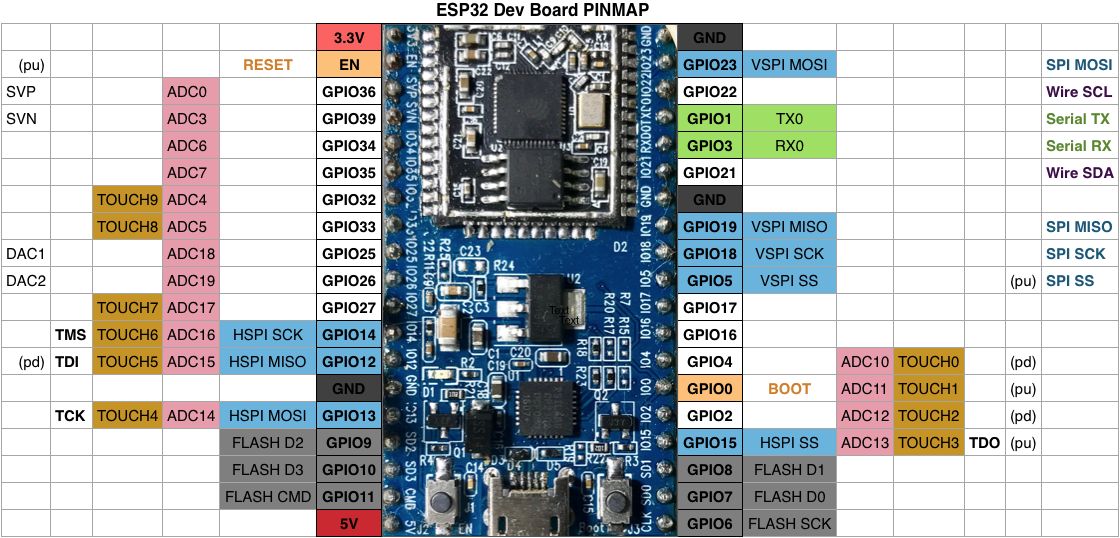The existing code did not follow protocol with 10bit addressed devices. Per _Philps/NXP Semiconductors UM10204 I2C-bus specification and user manual Rev. 6 4April2014_ pg.15 3.1.11 10-bit addressing: ~The first seven bits of the first byte are the combination of 1111 0xx of which the last two bits (xx) are the two Most-Significant Bits (MSB) of the 10-bit address; the eighth bit of the first byte is the R/!W! bit the determines the direction of the message~
Arduino core for ESP32 WiFi chip
Need help or have a question? Join the chat at 
Contents
- Development Status
- Installation Instructions
- Decoding Exceptions
- Issue/Bug report template
- ESP32Dev Board PINMAP
Development Status
Most of the framework is implemented. Most noticable is the missing analogWrite. While analogWrite is on it's way, there are a few other options that you can use:
- 16 channels LEDC which is PWM
- 8 channels SigmaDelta which uses SigmaDelta modulation
- 2 channels DAC which gives real analog output
Installation Instructions
- Using Arduino IDE
- Using PlatformIO
- Building with make
- Using as ESP-IDF component
Decoding exceptions
You can use EspExceptionDecoder to get meaningful call trace.
Issue/Bug report template
Before reporting an issue, make sure you've searched for similar one that was already created. Also make sure to go through all the issues labelled as for reference.
Finally, if you're sure no one else had the issue, follow the ISSUE_TEMPLATE while reporting any issue.
ESP32Dev Board PINMAP
Hint
Sometimes to program ESP32 via serial you must keep GPIO0 LOW during the programming process
Description
Languages
C
77.6%
C++
21.6%
Python
0.7%
